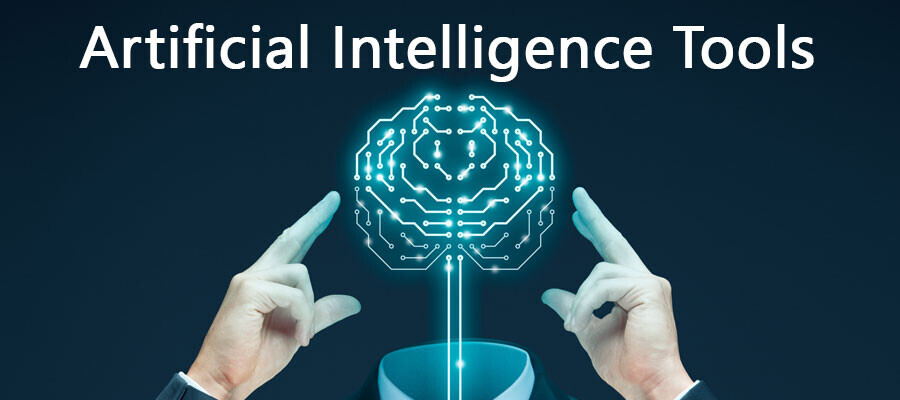Indispensible AI Tools.
AI tools have become an integral part of our tech-driven world, offering capabilities that were once the stuff of science fiction. But what exactly are they?
At their core, AI tools are software applications that use artificial intelligence to solve problems or perform tasks that typically require human intelligence. They range from simple chatbots to complex systems like recommendation engines or facial recognition applications.
The evolution of AI tools has been nothing short of remarkable. In their earliest days, AI consisted mostly of rule-based systems with limited scope and functionality. Modern AI tools now harness machine learning and deep learning, processing vast amounts of data to deliver impressive results. This transformation has allowed AI tools to become more adaptable, accurate, and far-reaching in their applications.
In today’s tech landscape, AI tools are prominent due to their ability to enhance productivity, provide insights, and automate mundane tasks. They’re crucial in industries like healthcare, finance, and customer service, where efficiency and precision are paramount. Whether simplifying customer interactions or aiding in complex decision-making processes, the significance of AI tools is undeniable.
Criteria for Evaluating the Best AI Tool
Choosing the best AI tool isn’t always straightforward, given the myriad options available. Understanding the essential features can make the decision easier and more aligned with your needs.
Key features to look for include accuracy, efficiency, and the ability to learn and adapt. An AI tool should excel in processing data and generating insights quickly while maintaining a high level of accuracy to ensure reliable outputs.
Another important aspect is the scalability of the AI tool. As your needs grow, the tool should be able to scale accordingly without significant disruptions or the need for complex overhauls.
Ease of use is also critical. A user-friendly interface and straightforward integration options can significantly reduce the learning curve, allowing your team to start using the tool effectively without extensive training.
Assessing the support and community around an AI tool can be a game-changer. A tool backed by reliable support services and an active user community can provide valuable resources and troubleshooting help when needed.
AI Tools Dominating the Market
The AI landscape in 2024 is bustling with competition, offering diverse tools committed to meeting varying needs. Understanding which tools stand out helps narrow choices and align them with your specific requirements.
Leading the market, you’ll find AI tools like IBM Watson, Google AI, and Microsoft Azure AI. Each brings unique strengths—IBM Watson is known for natural language processing prowess, Google AI excels in machine learning capabilities, and Microsoft Azure AI offers superior integration options for enterprise environments.
Comparing these giants requires assessing their specialized features. IBM Watson shines in industries needing robust language processing, while Google AI provides unmatched support for those focusing heavily on machine learning. Microsoft’s ecosystem integration benefits organizations already invested in their services.
To provide a clearer picture, case studies often highlight how companies utilize these AI tools effectively. From improving customer service response times to enhancing product recommendations, the applications are varied and impactful.
There’s no one-size-fits-all answer, but understanding the strengths of each platform helps you select the right tool for your unique needs. When weighing your options, consider industry-specific requirements and long-term goals.
Here is a list of AI Tools at this Link.
Evaluating AI Tools for Specific Needs
Choosing an AI tool involves more than just comparing features. Aligning an AI tool with specific industry needs is crucial to maximizing its potential.
Each industry has its own unique demands. In healthcare, AI tools need to manage sensitive data securely while providing accurate diagnostic support. In contrast, the retail industry might favor tools that enhance customer experience through personalization and inventory management.
Customizability is a key factor in this selection process. An AI tool that can be tailored to fit your business’s specific requirements can offer significant advantages in implementation and operation. Custom features enable you to address niche challenges and optimize the tool for your workflow.
Scalability should not be overlooked either. The AI tool should have the ability to grow alongside your business, adapting to increasing demands and complexity without requiring major overhauls. Down the road, this flexibility can save time and resources.
Hearing from others who have walked the same path can provide deep insights. User testimonials and detailed case studies offer real-world perspectives on the effectiveness and adaptability of AI tools across different sectors. They often reveal practical lessons and strategic tips that can inform your decision-making process.
Challenges and Limitations of AI Tools
AI tools, despite their broad capabilities, come with their own set of challenges and limitations. Understanding these is crucial in setting realistic expectations and preparing for potential hurdles.
One common challenge is the implementation complexity. Deploying an AI tool often requires integration with existing systems, which can be resource-intensive and technically demanding. It’s important to plan and allocate resources accordingly to manage this process efficiently.
Another issue is the data dependency of AI tools. These tools rely heavily on large volumes of quality data to function optimally. In environments where data is scarce or of low quality, AI tools may struggle to deliver accurate results, leading to skewed insights.
Ethical considerations also take center stage with increased AI adoption. Concerns over data privacy, bias in AI algorithms, and the potential for misuse highlight the need for rigorous ethical frameworks to guide AI development and utilization. Organizations must prioritize transparency and fair data policies to build trust with users.
Looking ahead, continual advancements in AI technology promise improvements in overcoming these challenges. However, staying informed and prepared is key to navigating the complexities of AI implementation successfully. Balancing innovation with ethical responsibility will be a critical path forward for leveraging AI tools rightly.
Conclusion: Making an Informed Decision
Choosing the right AI tool involves a blend of understanding what the market has to offer and aligning those offerings with your unique needs. Armed with knowledge of key features, market leaders, and potential challenges, you’re better equipped to make a decision that supports your long-term goals.
Reflect on the core needs of your industry and organization. Consider factors like ease of integration, scalability, customization possibilities, and ethical implications. These are crucial in ensuring that the AI tool not only meets immediate demands but also proves to be a valuable asset over time.
Leverage insights from real-world examples and seek advice from peers who have implemented similar tools. Their experiences can guide you in fine-tuning your choices and avoiding common pitfalls.
Ultimately, the key is to proceed with confidence, knowing that a thorough evaluation sets the foundation for successful AI integration that enhances efficiency, drives innovation, and respects ethical standards.
If you like this post, check out some of my other blogs on AItechWarrior.

Ask me how in the comments.
Steve
Some links on this site may be affiliate links, and if you purchase something through these links, I will make a commission on them. There will be no extra cost to you and, you could actually save money. Please read our full affiliate disclosure here.

